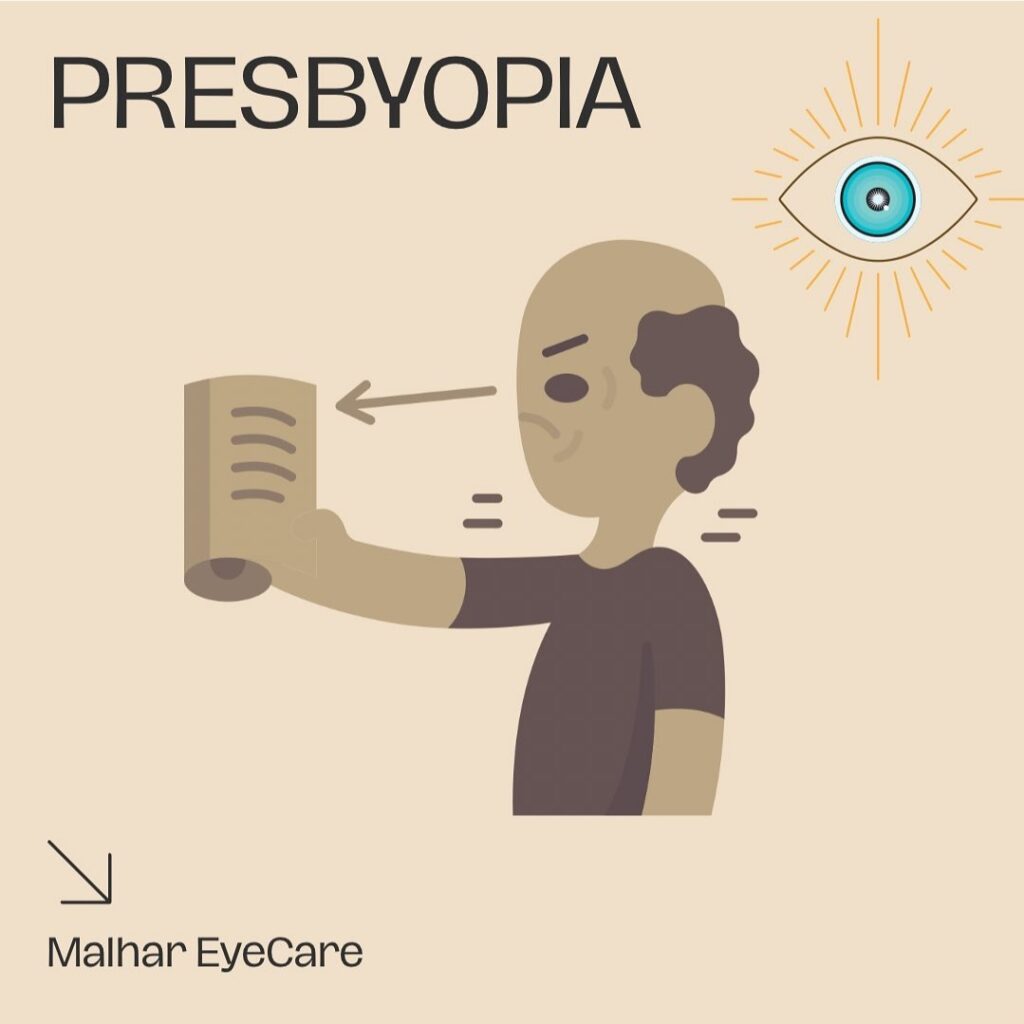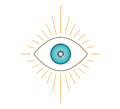Eye Care Simplified: Navigating Myopia, Hypermetropia and Presbyopia
Refractive errors are common vision problems caused by the shape of your eye preventing light from focusing properly on the retina. The most well-known types of refractive errors are myopia, hypermetropia, and presbyopia treatment options, which can cause difficulty seeing objects at various distances. Each of these conditions affects your ability to see clearly, but they can be managed effectively with the right approach, whether that includes eyeglasses, contact lenses, or refractive surgery.
What Are Refractive Errors?
Refractive errors occur when the shape of the eye prevents light from focusing directly on the retina, which is the light-sensitive layer at the back of the eye. Normally, light passes through the cornea and lens, and is precisely focused on the retina to produce clear images. In people with refractive errors, the eye’s shape or structure causes light to focus incorrectly, resulting in blurry vision.
Common Types of Refractive Errors:
- Myopia (Nearsightedness): Difficulty seeing objects at a distance.
- Hypermetropia (Farsightedness): Difficulty seeing objects up close.
- Presbyopia: Age-related loss of near vision.
Let’s explore these conditions and the available myopia, hypermetropia, and presbyopia treatment options to help you understand how to manage and correct them.
Myopia (Nearsightedness)
Myopia, also known as nearsightedness, occurs when the eyeball is too long or the cornea is too curved. This causes light entering the eye to focus in front of the retina instead of directly on it, resulting in blurred vision when looking at distant objects. Myopia typically begins in childhood and can progress until the eye stops growing in adulthood.
Symptoms of Myopia:
- Difficulty seeing distant objects clearly, such as road signs or a blackboard.
- Squinting or straining to see objects that are far away.
- Frequent headaches due to eye strain.
Myopia Treatment Options:
- Eyeglasses: A common and simple solution for correcting myopia. Eyeglasses with concave lenses help redirect light onto the retina for clearer vision.
- Contact Lenses: An alternative to glasses, contact lenses can correct myopia and provide a wider field of view.
- Refractive Surgery: LASIK or PRK surgery reshapes the cornea to allow light to focus properly on the retina, offering a permanent solution to myopia.
Hypermetropia (Farsightedness)
Hypermetropia, or farsightedness, is a condition where distant objects are seen clearly, but nearby objects appear blurry. This occurs when the eyeball is too short or the cornea has too little curvature, causing light to focus behind the retina rather than directly on it. Farsightedness can be present from birth, but many people don’t notice it until later in life.
Symptoms of Hypermetropia:
- Blurry vision when looking at objects up close, such as reading a book.
- Eye strain or discomfort after close-up tasks, like using a computer or reading.
- Frequent headaches, especially after prolonged periods of near work.
Hypermetropia Treatment Options:
- Eyeglasses: Convex lenses can correct hypermetropia by helping to focus light directly on the retina.
- Contact Lenses: Like eyeglasses, contact lenses can correct hypermetropia by focusing light properly within the eye.
- Refractive Surgery: LASIK or other types of surgery can reshape the cornea to correct hypermetropia, reducing or eliminating the need for corrective lenses.
Presbyopia: The Age-Related Refractive Error

Unlike myopia and hypermetropia, which are typically present from an early age, presbyopia is an age-related condition that affects the eye’s ability to focus on close objects. It usually begins to appear in the early to mid-40s and worsens until around age 65. Presbyopia occurs when the lens of the eye becomes less flexible, making it harder to focus on nearby objects.
Symptoms of Presbyopia:
- Holding reading materials at arm’s length to see the print clearly.
- Blurry vision at normal reading distances.
- Eye strain or headaches after reading or doing close-up work.
If you are experiencing these symptoms, it’s time to explore myopia, hypermetropia, and presbyopia treatment options that can help restore clarity to your vision.
Treatment Options for Presbyopia:
- Eyeglasses: Bifocals, trifocals, and progressive lenses can help correct presbyopia by offering multiple prescription strengths in one lens, allowing for clear vision at various distances.
- Contact Lenses: Options include bifocal contact lenses or monovision lenses, which correct one eye for distance and the other for near vision.
- Refractive Surgery: LASIK or conductive keratoplasty can reshape the cornea or make adjustments to improve near vision in presbyopic patients.
Managing Refractive Errors
With the advancements in eye care, there are now several myopia, hypermetropia, and presbyopia treatment options available, depending on your unique needs and lifestyle preferences. It’s important to consult with an eye specialist, such as Dr. Supriya Pendke at Malhar Eye Care, to determine the best course of action for your vision.
Comprehensive Eye Exams
The first step in managing any refractive error is to have a comprehensive eye exam. During this exam, your ophthalmologist will measure your eye’s ability to focus light and check for other vision issues. Based on the results, a customized treatment plan can be developed to address your specific needs.
At Malhar Eye Care, we specialize in providing personalized vision care, ensuring that our patients have access to the latest diagnostic tools and treatments.
Lifestyle Adjustments for Clearer Vision
While corrective lenses or surgery can address refractive errors, certain lifestyle adjustments can also help protect your vision and make it easier to see clearly. Consider the following tips:
- Take Breaks from Screen Time: Whether you have myopia, hypermetropia, or presbyopia, prolonged screen use can strain your eyes. The 20-20-20 rule can help: Every 20 minutes, take a 20-second break to look at something 20 feet away.
- Good Lighting: When reading or doing close-up work, ensure that your environment is well-lit to reduce eye strain.
- Regular Eye Checkups: Scheduling regular eye exams is crucial for monitoring refractive errors and adjusting your treatment plan as needed. This is especially important as presbyopia tends to worsen with age.
Protecting Your Vision as You Age
As we age, our eyes undergo natural changes, and refractive errors like presbyopia become more common. While the onset of presbyopia may be gradual, addressing it early can help prevent discomfort and improve your quality of life. Similarly, managing myopia and hypermetropia with the right myopia, hypermetropia, and presbyopia treatment options is essential for maintaining clear vision at any age.
At Malhar Eye Care, Dr. Supriya Pendke is dedicated to helping patients navigate the changes in their vision, whether they are dealing with nearsightedness, farsightedness, or age-related presbyopia. By offering a range of treatment options, from prescription eyewear to advanced surgical techniques, we can help you find the best solution to meet your needs.
Conclusion
Refractive errors such as myopia, hypermetropia, and presbyopia can significantly impact your daily life, but they are highly treatable. With the right approach, you can enjoy clear vision and reduce the discomfort associated with these conditions. Whether you need corrective lenses, contact lenses, or are considering refractive surgery, it’s important to consult with an experienced eye care professional to determine the best treatment for your specific situation.
If you are experiencing symptoms of blurry vision or difficulty focusing on objects, schedule an eye exam at Malhar Eye Care today. Dr. Supriya Pendke and her team are here to provide the care and expertise you need to keep your eyes healthy and your vision clear.
